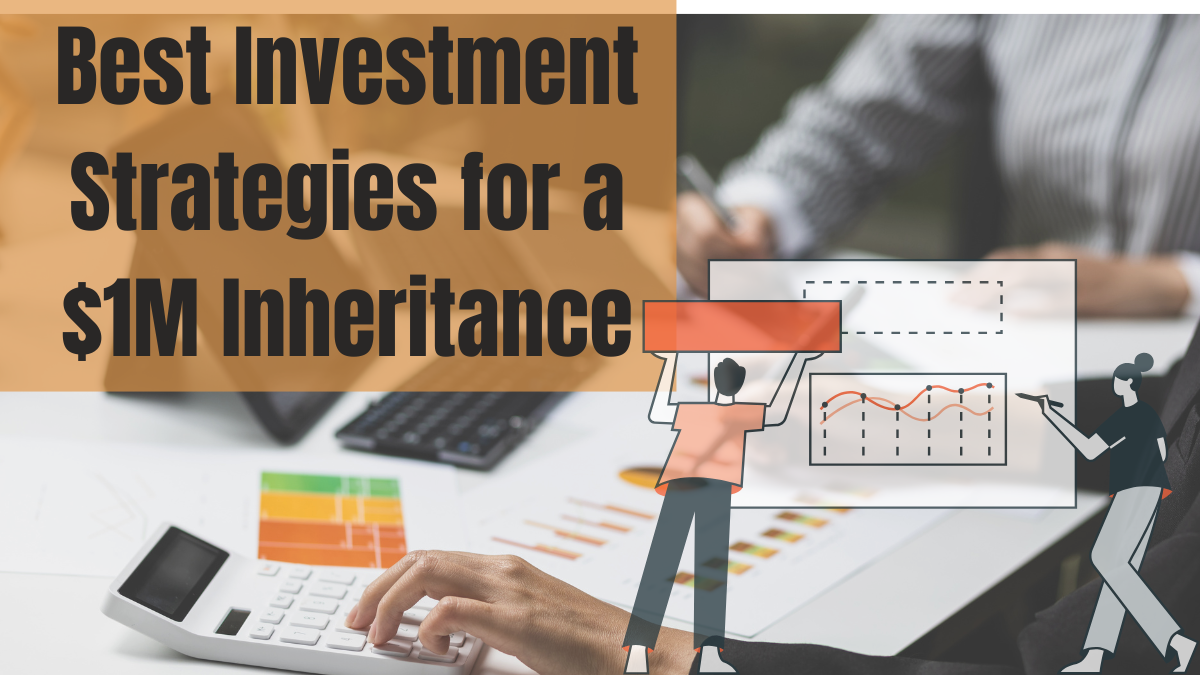Mark (62) and Rebecca (59) have reached a financial turning point after paying off their mortgage and seeing their son complete his education. Now, with a $1 million inheritance, they must decide how to preserve and grow their wealth while ensuring financial security for themselves and their son.
Their primary goals include:
- Ensuring a stable retirement with a spending goal of $80,000 per year after tax.
- Preserving the inheritance for their son’s future.
- Investing wisely without taking excessive risk.

Should Mark & Rebecca Use the Inheritance for Their Own Retirement?
Despite their financial discipline, projections show their current portfolio may not sustain their retirement needs beyond Rebecca’s age of 93.
- They currently have $300,000 in corporate savings, mostly in GICs.
- Their asset allocation is 97% cash and GICs, leading to low returns (2.24%).
- Their projected withdrawals from investments could deplete their savings within 10 years of retirement.
Solution: Moving to a balanced investment portfolio (stocks and bonds) could improve their projected returns to 5.22 percent, making their retirement financially sustainable.
How Should They Invest the $1 Million?
A diversified approach ensures wealth preservation and growth while keeping the funds accessible when needed.
| Investment Option | Why It’s Beneficial | Recommended Allocation |
|---|---|---|
| Balanced Portfolio (Stocks & Bonds) | Increases long-term returns while managing risk. | $500,000 |
| Tax-Free Savings Accounts (TFSA) | Protects investment gains from taxes; can be used for their son’s future. | $50,000 ($25K each) |
| First Home Savings Account (FHSA) for Son | Tax-advantaged savings for his first home. | $16,000 |
| Life Insurance (Joint Last-to-Die Policy) | Ensures a tax-free inheritance for their son. | $200,000 |
| Cash Reserves | Keeps liquidity for unexpected expenses or market dips. | $150,000 |
| Alternative Investments (Real Estate, ETFs, Private Equity, or Dividend Stocks) | Offers diversified growth opportunities. | $84,000 |
Key Takeaway: A balanced approach combining investments, tax planning, and estate planning ensures long-term financial security while preserving their son’s inheritance.
Should They Invest the Inheritance All at Once?
Mark and Rebecca are risk-averse, making them hesitant to invest the full amount immediately.
Solution: Dollar-cost averaging (DCA)—investing gradually over time—will:
- Reduce risk of investing at a market peak.
- Allow them to capitalize on market dips.
- Keep some funds liquid in case of unexpected needs.
Recommended Approach:
- Invest 50 percent immediately in a balanced portfolio.
- Invest the remaining 50 percent over 12-24 months based on market conditions.
How Can They Preserve the Inheritance for Their Son?
Instead of holding the funds as investments with taxable gains, they could:
1. Use Life Insurance for Tax-Free Wealth Transfer
- A joint last-to-die life insurance policy ensures their son receives a guaranteed, tax-free inheritance.
- This prevents the need to sell assets at a potential tax loss in the future.
2. Give an Advance Inheritance
- Instead of waiting, they could gift part of the inheritance now to help their son with a home purchase or investments.
- Contributing to his TFSA and FHSA ensures tax-free growth while limiting Mark and Rebecca’s tax liability.
3. Create a Trust for Asset Protection
- A trust could safeguard the inheritance, ensuring it is managed responsibly over time.
- Trusts can protect assets from taxation, creditors, or poor financial decisions.
What Are the Tax Considerations?
To minimize tax liabilities, Mark and Rebecca should:
- Maximize TFSA contributions to avoid capital gains taxes.
- Invest in dividend-paying stocks in taxable accounts for lower tax rates.
- Use their corporation to manage taxable income efficiently.
- Consider spousal RRSP contributions for tax deferral.
Frequently Asked Questions
Should Mark & Rebecca invest the full inheritance right away?
No, since they are risk-averse, a gradual investment strategy (DCA) would be safer, allowing them to invest during market dips.
Would a life insurance policy be a better option for their son’s inheritance?
Yes, life insurance ensures a tax-free inheritance, unlike investments that may be subject to capital gains taxes.
Can they start gifting their son’s inheritance now?
Yes, they can contribute to his TFSA, FHSA, or help with a home purchase, benefiting from early wealth transfer.
What investment strategy should they adopt?
They should move from cash-heavy assets to a balanced portfolio with stocks, bonds, real estate, and alternative investments.
How can they reduce tax on their inheritance investments?
By maximizing TFSA contributions, investing in tax-efficient assets, and utilizing corporate income management strategies.
Should they consider downsizing their home in the future?
Yes, if needed, selling their $1 million home could provide additional retirement funds.
How much should they keep in cash reserves?
At least $150,000 to ensure liquidity for emergencies and market downturns.
Conclusion: A Smart Investment Plan for Long-Term Stability
Mark and Rebecca’s $1 million inheritance presents a unique financial opportunity. By investing wisely, using tax-advantaged accounts, and considering life insurance, they can:
- Secure their retirement without financial stress.
- Preserve wealth for their son in a tax-efficient manner.
- Maximize investment growth while managing risks.
With proper financial planning, they can enjoy their golden years while leaving a strong financial legacy for their son.
Click here to know more.
Aanchal is a passionate writer with a keen interest in storytelling, content creation, and creative expression. She enjoys exploring diverse topics and crafting engaging narratives that captivate readers.
